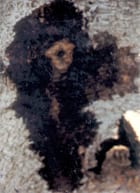Physalospora obtusa (fungus)
Trees affected include Ailanthus, alder, American holly, apple, boxelder, black locust, chinaberry, crabapple, crape myrtle, dogwood, flowering quince, honey locust, maple, mountain ash, oak, pecan, Persian walnut, persimmon, sassafras, Atlantic white cedar, Austrian and eastern white pines and found mainly in the United States: Northeast, southeast, central California.
Warm, rainy weather in early spring at bud break. Inoculum source from dead and infected twigs and branches on tree all contribute .
This disease is noticed by wet, bleeding cankers on stems and branches of alders, with twig dieback. May cause fruit rot, cankers, cone and seed rot on conifers, and twig blights.
It overwinters as perithecia on infected and dead branches. Ascospores released in spring, during and following wet weather, when conditions are right. These spores invade bark wounds, germinate in the bark, and form pycnidia which provide inoculum throughout the summer, until cool fall weather favors perithecial development in bark and fruit.


